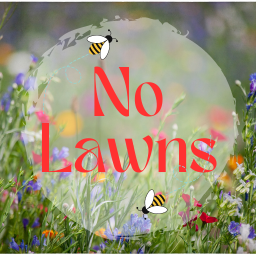I’m in the Piedmont (South-east US) region with a hardiness zone of 8a. I have a large area of turf grass, and I want to plant native plants, attract butterflies, native insects, fireflies, all of it. I’m looking for trees, shrubs, small plants, anything would be nice to plant.
Where do I start? I see a lot of different species online, but where can I get seeds for them to plant? Is planting from seeds a viable option for a beginner?
Any help would be appreciated!


At the risk of rambling, I’ll share a few hard earned lessons about getting started.
Lesson 1: clay turns to concrete when it dries. I broke the handles off two shovels within the first month of us buying our house. I now have an excessively heavy steel handled shovel, and I’ve learned that planting should not be done during our summers. If it’s at all dry when you are going to work an area, watering it ahead of time will make working the soil much easier. Oh, and any tool that is meant to work the ground should be kept very sharp. Shovels are so much easier to use when freshly sharpened.
Lesson 2: plant in the fall. Most perennials will do much better planted in the fall. Even some garden veggies like radishes, carrots, leeks, and brassicas will do better growing slowly in our winter months. Save spring planting for tender annuals. Our spring gets hot so fast that foliage will outpace root growth if you plant in the spring and you’ll struggle to keep things watered without overwatering.
Pace yourself: I’m terrible at this and wanted to plant everything everywhere all at once. Pick one area to do thoroughly rather than scattered plantings. Plan out a planting bed with a defined border. Plant short stuff near the edge, then clumps of medium height, and tall bushy stuff in the back. Plant like kind plants in clusters, not lines. Lines beg to be constantly pruned or they look messy.
Lack of site prep will come back to haunt you: get a good scuffle hoe and keep your intended planting area clear of growth for a few weeks before planting. Hoeing is so much faster and easier when you don’t have to meticulously navigate around your tender plantings. Sheet mulching is a good idea. Rather than scavenging cardboard, I prefer to use rolls of brown kraft paper. You can find big rolls from paint stores/lowes for cheap. Put down a couple layers of paper then mulch on top. The paper will act like a temporary weed barrier but will break down within a year. The paper is easy to puncture.
A lot of advice you see online is great for the northeast or northwest. Things labeled as full sun might just wither in the heat of our climate. The more you can design your garden to let in morning light, and shade out harsh afternoon light, the easier time you’ll have getting more sensitive plants established. If you can, put your tallest plantings on the western side. Planting timelines you see online might be wildly different from what’s best in the piedmont. For example, radishes will bolt and flower in the heat before growing a big bulb if you plant them in the spring. 8a is awkward in that you can’t garden like tropical areas, but a surprising amount of plants will make it through the winter. The deep summer is sometimes more dormant than the winter months.
My SO and I like to sketch out plans on tracing paper over top printouts of our property survey. Things change in practice, but it’s good to start with an idea of where you want paths and garden beds to be.